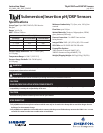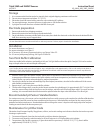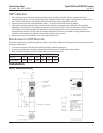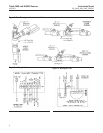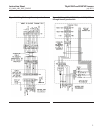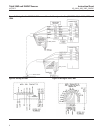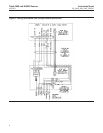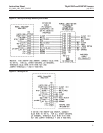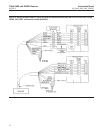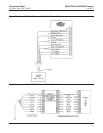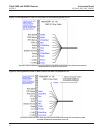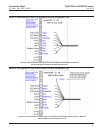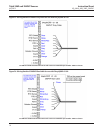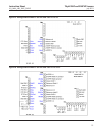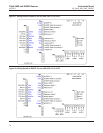
2
TUpH 396P and 396PVP Sensors Instruction Sheet
July 2013 LIQ_MAN_ABR_396P_396PVP
Storage
1. It is recommended that electrodes be stored in their original shipping containers until needed.
2. Do not store at temperatures below -5 °C (23 °F).
3. Electrodes should be stored with a protective cap containing KCI solution.
4. For overnight storage, immerse the sensor in tap water or 4 pH buffer solution.
5. A pH glass electrode does have a limited shelf life of one year.
Electrode preparation
1. Remove electrode from shipping container.
2. Remove the protective boot covering the electrode bulb.
3. For pH electrode, rinse away salt lm with clean water, then shake the electrode so that the internal solution lls the
bulb, thus removing any air trapped there.
Installation
For sensor dimensions, see Figure 1.
For sensor orientation, see Figure 2.
For VP sensor or -02 sensor (no preamp) wiring, see Figures 3 thru 22.
For -01 sensor (with preamp) wiring, see Figures 23 thru 28.
Two Point Buffer Calibration
Select two stable buffer solutions, preferably pH 4.0 and 10.0 (pH buffers other than pH 4.0 and pH 10.0 can be used as
long as the pH values are at least two pH units apart).
1. Immerse sensor in the rst buffer solution. Allow sensor to equilibrate to the buffer temperature (to avoid errors due
to temperature differences between the buffer solution and sensor temperature) and wait for reading to stabilize.
Value of buffer can now be acknowledged by analyzer/transmitter.
2. Once the rst buffer has been acknowledged by the analyzer/transmitter, rinse the buffer solution off of the sensor
with distilled or deionized water.
3. Repeat steps 1 and 2 using the second buffer solution.
4. The theoretical slope value, according to the Nernst equation for calculating pH, is approximately 59.17 mV/pH. Over
time the sensor will age, both in the process and in storage, and will result in reduced slope values. To ensure accurate
readings, it is recommended that the electrode be replaced when the slope value falls below 47 to 49 mV/pH.
Recommended pH Sensor Standardization
For maximum accuracy, the sensor can be standardized on-line or with a process grab sample after a buffer calibration has
been performed and the sensor has been conditioned to the process. Standardization accounts for the sensor junction
potential and other interferences. Standardization will not change the sensor’s slope but will simply adjust the analyzer’s
reading to match that of the known process pH.
Maintenance for pH Electrode
Electrodes should respond rapidly. Sluggishness, offsets, and erratic readings are indicators that the electrodes may need
cleaning or replacement.
1. To remove oil deposit, clean the electrode with a mild non-abrasive detergent.
2. To remove scale deposits, soak electrodes for 30 to 60 minutes in a 5% hydrochloric acid solution.
3. Temperature effect on life expectancy: If glass electrode life expectancy is 100% @ 25 °C (77 °F), then it will be
approximately 25% @ 80 °C (176 °F).
Note
Do not allow lubricant to coat electrode bulb or reference junction. If it does, wipe it clean before installation.
Note
A pH 7 buffer solution reads a mV value of approx. zero, and pH buffers read approximately ± 59.1 mV for each pH unit above or
below pH 7. Check the pH buffer manufacturer specications for millivolt values at various temperatures since it may affect the
actual value of the buffer solution mV/pH value.



